
10 Must-Plant Spring Bulbs in Fall for Gorgeous Blooms
Published: 22/10/2024 | Updated: 22/10/2024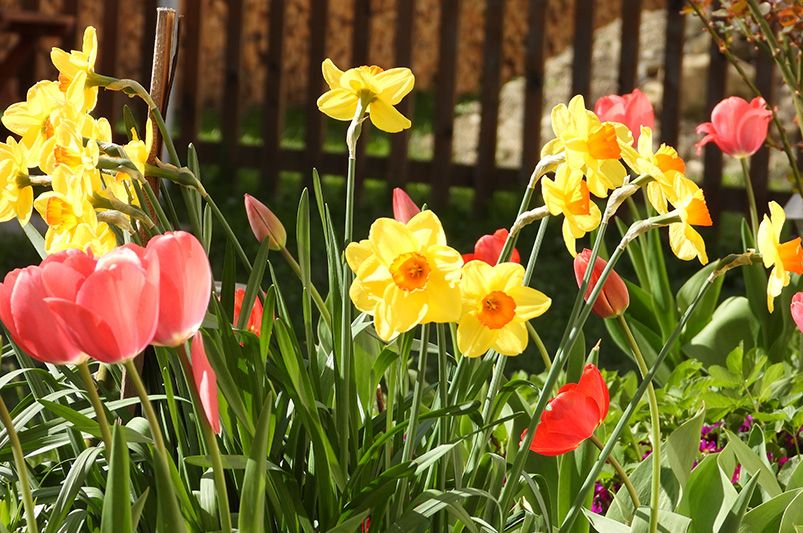
Key Highlights
- Want a stunning spring garden? Planting bulbs in the fall is the secret!
- Choose from a wide variety of colors and bloom times to create a long-lasting display.
- Most spring bulbs are low-maintenance and return year after year.
- Protect your investment from hungry critters with chicken wire or repellents.
- Don't wait until spring to plant – get those bulbs in the ground before the first frost!
Introduction
Ready to turn your spring garden into a colorful paradise? The trick is to plan ahead and plant bulbs in the fall. When the summer heat goes away, these small bundles are resting, waiting for winter’s cold to wake them up. By planting bulbs in the fall, you are helping them grow roots and get ready for a fantastic display of color in early spring.


Top 10 Spring Bulbs to Plant This Fall
As the days get shorter and the air becomes cooler, it’s time to think about your spring garden. A great way to have bright colors is by planting spring-flowering bulbs in the fall.
There are many options, from the happy yellow daffodils to the bright colors of tulips. Whether you like traditional plants or something different, there is a spring bulb for every gardener. So put on your gardening gloves, pick your favorites, and let’s start planting!
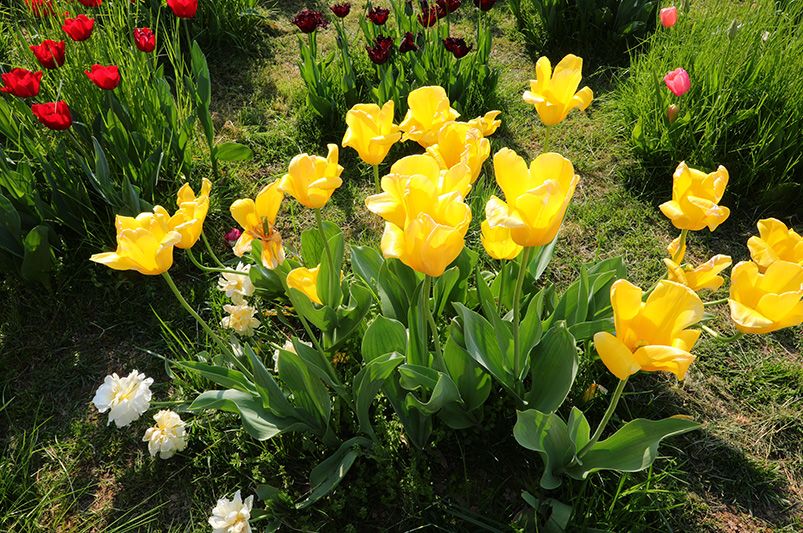
1. Tulips: A Rainbow of Colors for Early Spring
No spring garden is complete without the bright beauty of tulips. These popular bulbs come in a rainbow of colors, like classic reds and yellows or soft pastels. Just think about waking up to a garden filled with the happy colors of these early spring flowers.
Tulips like well-drained soil and plenty of sunshine. For a big effect, plant them in groups of 10 to 15 bulbs, placing them about 4 to 6 inches apart. You can mix different colors and types for a stunning display.
Some tulips may come back for a second year. However, it is usually better to treat them as annuals. This means planting fresh bulbs each fall for the best blooms.
2. Daffodils: Bright and Hardy Bloomers
Daffodils are known for their bright yellow flowers. They are a popular choice because they are easy to grow. These durable bulbs come back every year, adding color to your garden. Daffodils also resist deer and rodents, making them great for any yard.
Daffodils enjoy full sun but can handle some shade. They like well-drained soil too. When you plant them, put them about 6 inches deep and 4 to 6 inches apart. Make sure the pointed end is facing up.
For a natural look, plant daffodils in groups across your garden. They look beautiful under trees, providing early spring color before the leaves come out.
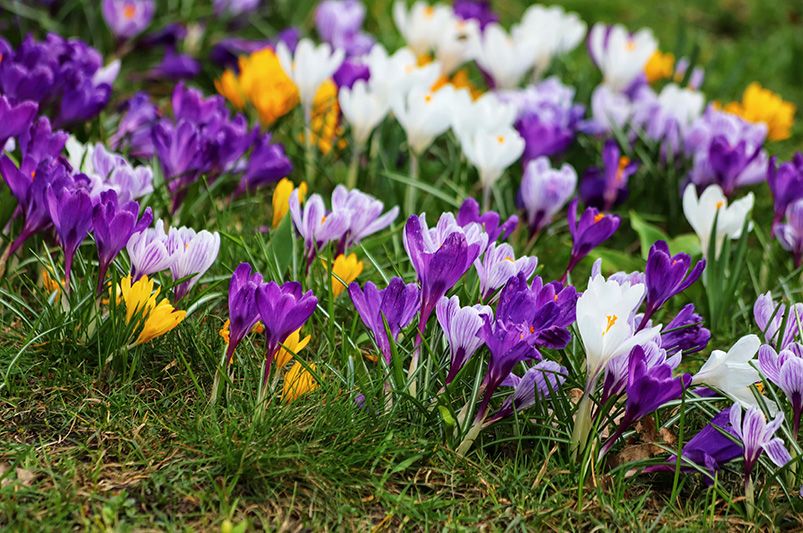
3. Crocus: The First Sign of Spring
Few sights are as nice as a carpet of crocuses breaking through the last bits of winter snow. These small but strong flowers are often the first sign of spring, bringing warmer days and new beginnings. Their bright colors of purple, yellow, and white add a bit of magic to the still-sleepy landscape.
To plant crocus bulbs, do it in the fall. Pick a spot with full sun to partial shade and make sure the soil drains well. Plant them about 2 to 3 inches deep and space them 2 to 3 inches apart.
Crocuses are also great for growing in lawns. Just remember to wait to mow the area until after they have finished blooming.
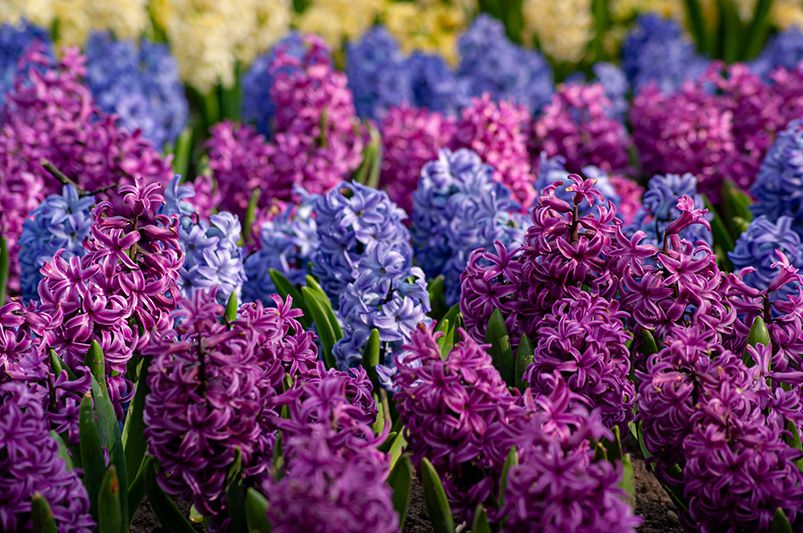
4. Hyacinths: Fragrant and Colorful
Fill your spring garden with the lovely smell of hyacinths. These popular bulbs are beautiful and have a sweet perfume that will charm you. They have tightly packed flowers in many pretty colors, like pink, purple, blue, white, and yellow.
Hyacinths grow best in well-drained soil and need full sun or some shade. Plant them 4 to 6 inches deep and put them 6 inches apart.
For a beautiful look, plant hyacinths in groups or rows. You can also use them to make borders and containers look nice. Their wonderful fragrance is great when they are near walkways or seating areas outside.
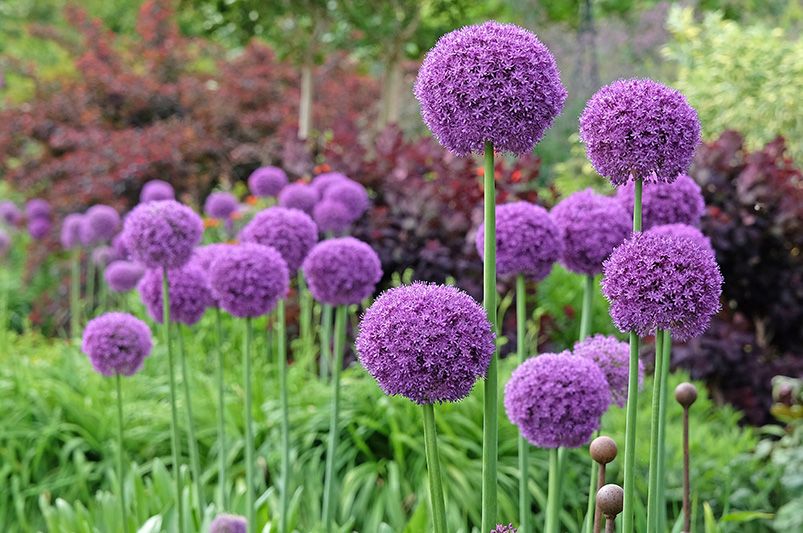
5. Alliums: Dramatic Globes of Color
Add special charm to your spring garden with alliums. These ornamental onions have large, round flower heads that sit on tall, strong stems. Their bold look brings height and texture to your garden. The bright purple colors attract many pollinators.
To plant allium bulbs, do it in the fall. Choose a spot with full sun or partial shade and make sure the soil drains well. Plant the bulbs about 4 to 5 inches deep, based on the bulb size. Space them 8 to 12 inches apart.
Alliums don’t need much care and are safe from deer, so they are perfect for any kind of garden. Their special blooms also work well as cut flowers, bringing a modern touch to bouquets.
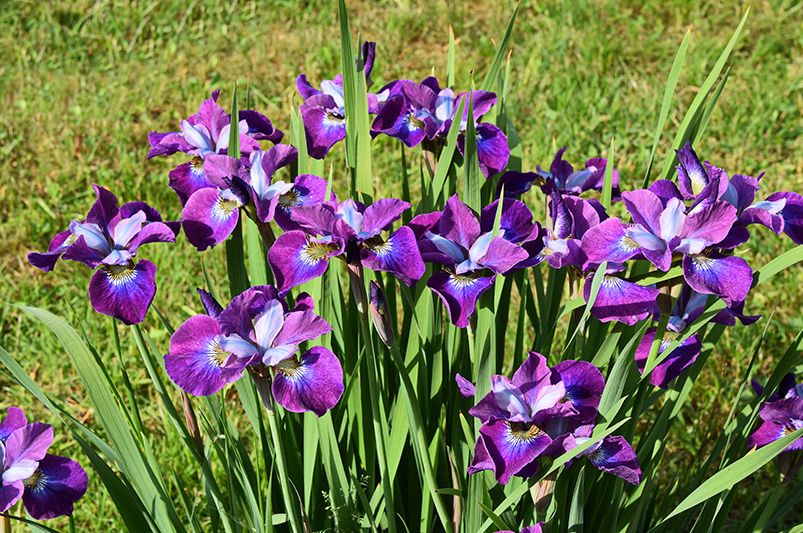
6. Iris: Elegant and Butterfly-Like Flowers
Add a touch of royal beauty to your spring garden with the lovely irises. These beautiful flowers have unique, butterfly-like blooms. They come in many colors, including classic purple, blue, bright yellow, pink, and white.
Irises grow from rhizomes, not bulbs. It is best to plant these in the fall. They need a spot with full sun to partial shade and soil that drains well. When planting, place the rhizomes flat just below the surface, with the roots pointing down.
Once they are established, irises don’t need much care and can handle dry conditions. This makes them perfect for new gardeners. Their lovely blooms attract butterflies and hummingbirds, bringing life to your garden.

7. Anemones: Dainty Yet Bold
Embrace the beauty of anemones, or windflowers, to add a whimsical touch to your spring garden. These lovely flowers have delicate blooms that look like poppies. They come in many beautiful colors like pink, purple, blue, red, and white.
To grow anemones, plant their bulbs in the fall. Choose a spot that gets full sun to partial shade and has well-drained soil. Plant the bulbs about 2 to 3 inches deep and space them 4 to 6 inches apart.
For a beautiful display, put anemones in groups or drifts. This will let their gentle beauty create a colorful carpet. Their special blooms are also great for cut flowers, bringing a touch of charm to any bouquet.
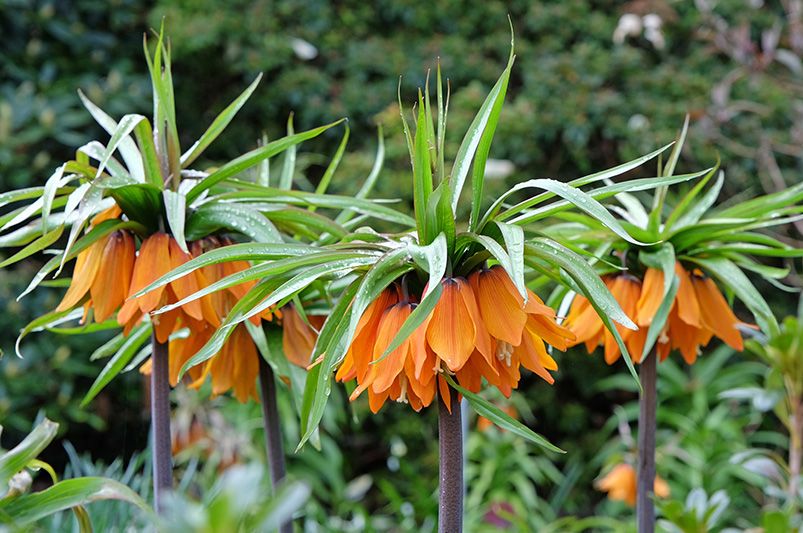
8. Fritillaria: Unique Checkerboard Patterns
For something different, think about adding the beauty of fritillaria to your spring garden. These flowers, called checkered lilies, have nodding, bell-shaped blooms with unique checkered patterns. Their strange look will get people's attention and add fun to any garden.
Plant fritillaria bulbs in the fall. Choose a spot that gets full sun to partial shade and has well-drained soil. They like to be planted about 4 to 6 inches deep and 6 to 8 inches apart.
Fritillaria are easy to care for and deer-resistant. This makes them a good option for many types of gardens. Their special blooms also attract pollinators, bringing life to your spring garden.
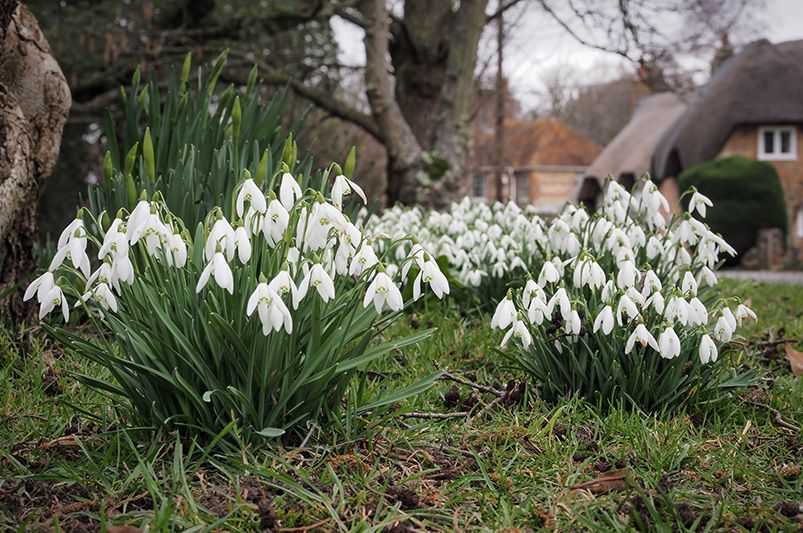
9. Snowdrops: Delicate and Resilient
Celebrate how strong nature can be with the beautiful snowdrops. These tiny flowers bloom early in late winter or early spring. They often break through the snow and ice, bringing warmth and hope for the warmer days ahead. Their bell-shaped blooms add a clean and hopeful look to the quiet landscape.
To grow snowdrops, plant their bulbs in the fall. Pick a spot that gets full sun or some shade, with soil that is moist and drains well. You should plant the bulbs about 2 to 3 inches deep and space them 2 to 3 inches apart.
Snowdrops will spread over time, creating lovely white carpets. They are also resistant to deer and rodents, making them a great choice for any garden.
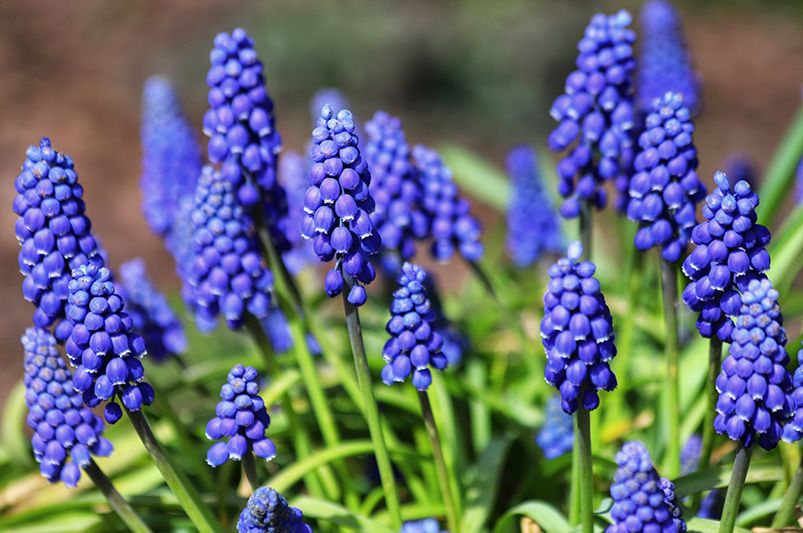
10. Grape Hyacinths: Vibrant Blue Clusters
Create a sea of bright blue with the lovely grape hyacinths. These delightful bulbs, called muscari, make small clusters of bell-shaped flowers. They look like tiny bunches of grapes. Their happy blue colors bring fun and joy to your spring garden.
Plant grape hyacinth bulbs in the fall. Choose a spot with full sun or partial shade and good, well-drained soil. Plant them about 3 to 4 inches deep and space them 2 to 3 inches apart.
Grape hyacinths come back year after year, adding beauty to your garden. They are resistant to deer and rodents, making them a great choice for any yard.
Conclusion
Spring bulbs that you plant in the fall will fill your garden with bright colors early in spring. You can choose flowers like Tulips and Snowdrops. Each bulb brings its own special style to your garden. Picking different types means you will have flowers blooming for a longer time. It's important to plant them at the right depth to help them grow well. You can plant them in garden beds or pots. These bulbs will give you a beautiful display. Start to plan and plant now so you can enjoy many blooms next spring. Enjoy the beauty of nature with these important plant bulbs for an amazing garden change!
Frequently Asked Questions
When is the Best Time to Plant Spring Bulbs?
The best time for fall planting is usually late fall. This normally happens about six weeks before the ground freezes in your USDA Hardiness Zone.
How Deep Should I Plant My Bulbs?
A good rule of thumb is to plant bulbs about two to three times their height deep. For example, if the bulb is 2 inches tall, plant it 4 to 6 inches deep. If the soil is sandy, plant them a bit deeper.
Can I Plant Bulbs in Containers?
Sure! Fall bulbs grow well in containers. If you live in northern climates, make sure to put them in a cold garage or shed during the winter. If you are in warmer climates, you might not need to do this.
Need Assistance for a Complete Landscape Makeover?
Shrubhub’s landscape design packages can significantly transform the lives of homeowners by delivering customized, professional landscaping plans tailored to their unique space and personal style. With the ease of online collaboration, you are guided step-by-step through a design process that fundamentally reshapes your outdoor environment. The result is an aesthetically pleasing and functional outdoor living area that maximizes the potential of your property.


